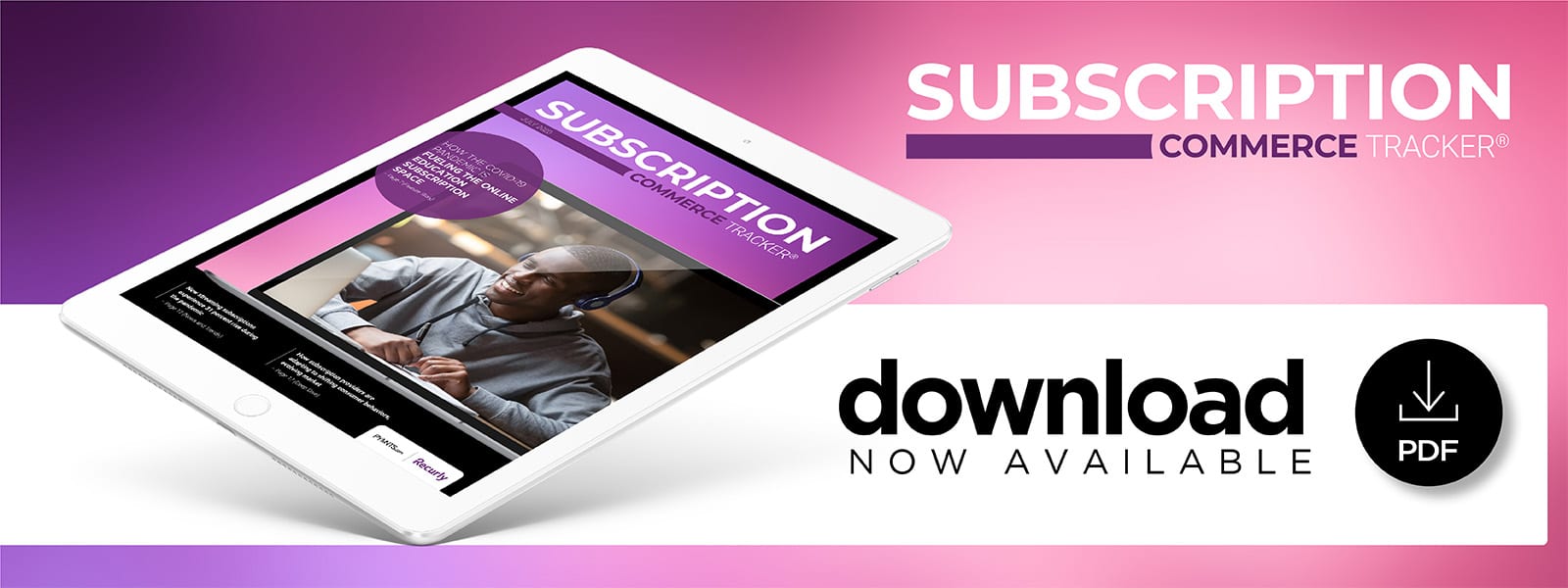Deep Dive: Charting The Course Of An Evolving Subscription Market

The pandemic has in a few short months radically altered how consumers shop.
Even though stay-at-home orders have been eased across the U.S., many consumers have been largely homebound and still reluctant to venture out due to ongoing health concerns or limited in-store shopping options.
These circumstances have dramatically enhanced the value proposition behind subscription services. Consumers can conveniently receive curated collections of their preferred products — whether makeup, clothes or furnishings — and feed their appetites for news and entertainment, all from the comfort of their homes. Subscriptions can ensure steady access to favorite services and products, and at their core, they offer consumers a sense of normalcy and routine.
Yet the pandemic has also generated economic hardship and financial strain. Many consumers are in belt-tightening mode, and they may be reassessing which subscriptions to cancel or keep, especially if they feel they already have too many of them. This brings new urgency to challenges that have long faced subscription providers in a crowded and competitive market, including onboarding, conversion hurdles and the need to offer flexible and customizable plans and pricing options, particularly for users considering ending their subscriptions.
The Pandemic Effect
The pandemic has exposed a great digital divide across the economy, and this is certainly the case when surveying the wide and varied subscription market. Digital natives like streaming and digital media platforms have thrived in the early weeks of the pandemic. On the other hand, subscription services that depend on in-person visits, such as gyms and hands-on classes, have been dealt a severe blow. Fitness class marketplace ClassPass, for example, laid off more than half its staff after gyms were forced to shutter en masse.
Streaming subscriptions have grown by double digits since the pandemic forced consumers indoors, with one report estimating a 31 percent increase in new sign-ups between March and May. Another survey found that the share of U.S. consumers with at least one paid streaming service had risen to 80 percent, up from 73 percent before the pandemic. The survey also found that the average consumer had four paid video subscriptions, reflecting just how populated the market has become with new players such as Disney+ and Apple TV+.
Digital media subscriptions have also experienced post-pandemic growth, a phenomenon likely linked to the extraordinarily newsworthy times consumers find themselves in. New digital media subscriptions in the U.S. grew by nearly 100 percent at their highest point in March, reaching nearly 200 percent in Europe that month. The sign-up rate has dropped off since then, but it remains notably high for an industry that has struggled to achieve the popularity of other subscription segments.
Product boxes have also been on an upswing since the pandemic began, although their trajectory has been more uneven than other segments. Meal kits have posted strong growth as consumers have taken a DIY approach to dining at home, for example, with restaurants largely closed.
Fashion boxes faced countervailing winds, on the other hand. Box of Style saw new subscription rates drop between 20 percent and 30 percent in the early weeks of the pandemic, but the rate has since rebounded by 20 percent, according to its co-CEO, Rodger Berman. This may be due to consumers being less concerned about their apparel, since the pandemic has greatly curtailed public outings, while others may crave creature comforts more than ever.
One of the more notable subscription success stories to emerge out of the pandemic is Peloton, the fitness brand known for its connected exercise bikes and, more recently, its subscription class offerings. The company saw revenues grow by 66 percent in the fiscal third quarter to $524.6 million, fueled by a surge in new subscribers. The company not only gained new members, but it also kept its existing ones, reporting a remarkably low churn rate of 0.46 percent.
Adapting to a New and Evolving Reality
The varying fortunes of subscription enterprises demonstrate that doing the subscription model right requires investment, strategy, robust digital capabilities, and flexible plan offerings. One familiar challenge providers have had to grapple with is subscription fatigue or consumers’ sense that they are juggling too many accounts. The pandemic may in fact intensify these feelings for younger and budget-conscious consumers. Millennials hold an average of 17 subscriptions, according to one survey, and 40 percent of them feel “overwhelmed” by having to manage all of them.
This points to a reality that all providers must be prepared to reckon with: Subscribers may want to cancel their plans on account of subscription fatigue, personal financial circumstances, or other factors. One key subscription feature has come to the fore in such scenarios: pausing. This allows users to place their accounts on hold while preserving their settings and preferences, and it enables providers to maintain connections with their customer base.
Offering a pause function could play an important role in mitigating churn. More than 16 percent of current product and service subscribers in the U.S. consider themselves at least somewhat likely to cancel one of their subscriptions, according to PYMNTS research. Yet 8.5 percent of them would be very or extremely likely to pause their accounts if this were an option. This translates to 14.2 million potential cancellations that could be averted.
A growing number of providers are putting pause plans into action, and not merely as a backstop when users go through the cancellation process. Box of Style has added a pause option to subscribers’ accounts, for example. Netflix has announced that it will proactively reach out to users with accounts that have been inactive for a year or longer, asking if they want to continue. If the company receives no response, it will automatically place the accounts on hold.
These types of policies represent a dramatic departure from the early days of the subscription frenzy, when some providers made it notoriously difficult to end services. Current market conditions may reinforce a bedrock principle of business: Loyalty and long-term relationships are driven by delivering consistent value to consumers, not tricks or gimmicks. One thing has certainly changed in the current economic and social climate, however: Subscription providers must be able to demonstrate their value through digital channels.

